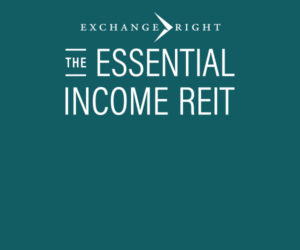Cap Rates Rose for Some Real Estate Deals in H1, Expected to Edge Higher
July 21, 2022 | Christie Moffat & Chris Hudgins | S&P Global Market Intelligence
Capitalization rates for commercial real estate properties showed small to modest increases during the first half of 2022, reflecting the impact of rising interest rates, and could edge higher as property value growth begins to slow.
Cap rates are used to estimate the rate of return that a property is expected to generate. They are calculated by dividing net operating income by property asset value. Generally, a lower cap rate equals less risk, providing a more reliable return for investors.
Rising interest rates affect cap rates because they make the economics of investing more difficult. If interest rates are higher than the investment yield, property prices are impacted as buyers come under pressure, CBRE Group Inc. Senior Director of Capital Markets Research Darin Mellott said in written comments to S&P Global Market Intelligence. In turn, that affects the cap rate equation.
Cap rates have not increased uniformly across the real estate sector, as demand for certain asset types and in specific locations has boosted rents and property values.
Popular sectors like multifamily and industrial have lower cap rates thanks to a combination of high property values and strong rental income. The average cap rate for multifamily was 4.5% at the end of the first quarter of 2022 and is expected to hover there through the end of the year, according to the National Association of Realtors.
Industrial had an average cap rate of 5.3% and is expected to tick up to 5.7% by the end of the year. In contrast, both office and retail cap rates averaged 6.1% at the end of the first quarter, and both are expected to rise to 6.3% by year-end, NAR found.
“It is possible to have that price appreciation and that steady cap rate because of the … growth in [net operating income] that we’re seeing in tandem,” Bluerock Real Estate LLC research strategist Miguel Sosa said in an interview.
In many cases, sellers have achieved such strong returns on their properties that small cap rate movements or changes in property values have not been problematic, Mellott added.
The prospect of a recession is also impacting how real estate investors evaluate risk. Though lower cap rates are preferred, some sellers are willing to sell at higher cap rates and lower prices because of greater uncertainty in the future, Mellott said.
“Where we’re seeing it really shape behavior is on the seller side of things, as asset dispositions have been hastened,” Mellott said.
Overall, higher interest rates are expected to weigh on U.S. investment volumes, as investors that rely on debt for purchasing properties continue to back away from deals.
A continued upward bias on cap rate movement is expected, but it is unlikely to be as large as the first half of the year, Mellott said.
“Generally speaking, we see volumes remaining healthy and full year 2022 will look pretty good, but we expect rising rates to begin to impact [transaction] volumes as the year goes on,” Mellott said.











